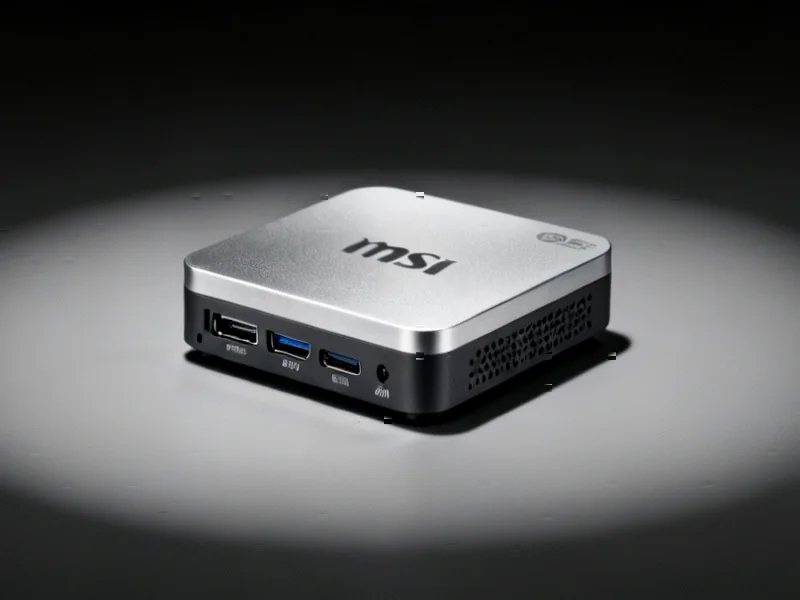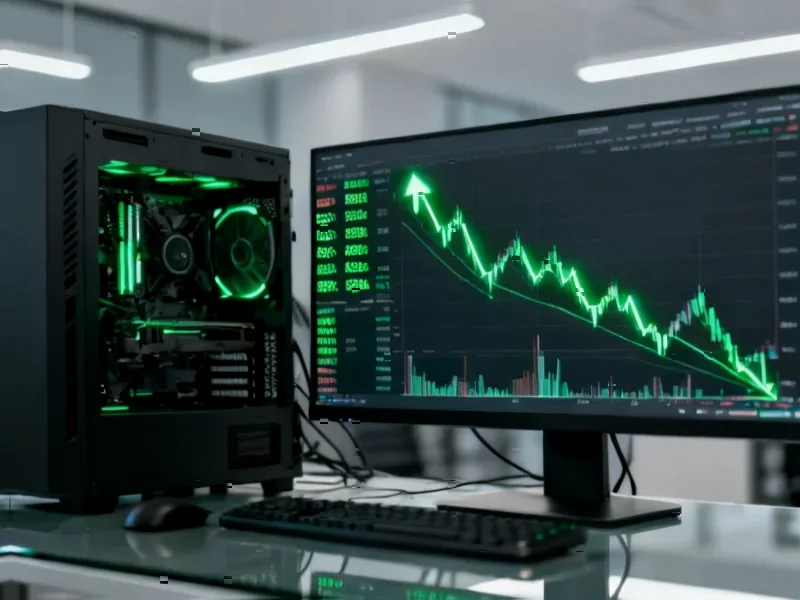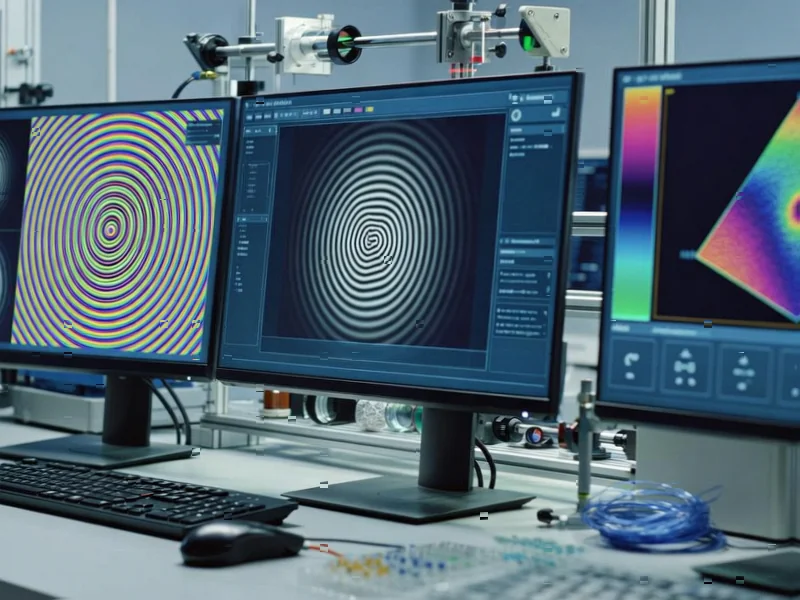According to Guru3D.com, MSI has launched a new non-MAX version of its MAG B850 TOMAHAWK WIFI motherboard that maintains most features of the MAX edition while making strategic reductions in heatsink size, wireless networking, and PCIe configuration. The board features a robust 14+2+1 phase digital power design with 80A DrMOS stages, dual 8-pin EPS connectors, and supports DDR5 memory speeds exceeding 8200 MT/s. Connectivity includes one PCIe 5.0 x16 slot, three M.2 slots (two PCIe 5.0 x4 and one PCIe 4.0 x4), and upgraded Wi-Fi 7 with Bluetooth 5.4. The rear I/O offers comprehensive USB options including 20 Gbps and 10 Gbps USB-C ports alongside 5 GbE wired networking. This strategic product differentiation creates an interesting market position that deserves deeper analysis.
Precision Market Segmentation
MSI’s decision to launch a non-MAX variant represents classic tiered product strategy in the highly competitive motherboard market. By creating a feature-differentiated but performance-similar product, MSI can capture multiple price points without developing entirely new platforms. The B850 chipset itself sits strategically between premium X870/X870E boards and entry-level B650 options, allowing MSI to target users who want robust power delivery and modern connectivity without paying for enthusiast-level features they won’t utilize. This approach maximizes market coverage while minimizing engineering costs, as both MAX and non-MAX versions share the same fundamental PCB design and component architecture.
Strategic Cost Optimization
The specific features MSI chose to modify reveal careful cost-benefit analysis. Reduced heatsink coverage represents one of the most straightforward manufacturing savings while having minimal impact on most users’ experience. The retention of the 14+2+1 phase power design with 80A DrMOS demonstrates MSI understands that power delivery remains non-negotiable for the target market of Ryzen 7000/8000 series processors. Similarly, maintaining PCIe 5.0 support for both graphics and storage reflects the growing importance of future-proofing in the mid-range segment. These calculated trade-offs suggest MSI’s product managers have deeply analyzed which features drive purchasing decisions versus which represent nice-to-have extras that can be trimmed to hit specific price points.
Navigating the AM5 Competitive Landscape
This launch comes at a critical juncture in the AM5 platform lifecycle. With AMD’s Ryzen 9000 series processors imminent according to AMD’s roadmap, motherboard manufacturers are scrambling to offer compelling options across all price segments. MSI’s move positions them strongly against competitors like ASUS, Gigabyte, and ASRock who employ similar tiering strategies. The MAG B850 TOMAHAWK WIFI non-MAX edition likely targets the sweet spot between $180-$220, a fiercely contested price bracket where features like Wi-Fi 7 and PCIe 5.0 storage provide meaningful differentiation. By launching now, MSI captures early adopters upgrading to new Ryzen processors while establishing shelf presence before the next generation arrives.
Revenue and Margin Implications
From a financial perspective, this product strategy serves multiple revenue objectives. It creates an upsell path from entry-level B650 boards while providing a downsell option for customers considering premium X870 models but constrained by budget. More importantly, it allows MSI to maintain healthier margins than competing solely on price in the budget segment. The shared platform development between MAX and non-MAX variants spreads R&D costs across more units, improving overall profitability. As the AM5 platform matures and production costs decrease, these carefully differentiated products will become increasingly important for maintaining motherboard division profitability amid intensifying price competition.
Why This Launch Timing Matters
The timing of this release aligns with several market dynamics that make it strategically advantageous. PC component sales typically see seasonal strength during back-to-school and holiday periods, making late summer an ideal launch window. More significantly, with AMD’s Zen 5 architecture imminent, motherboard manufacturers need refreshed product lines to capitalize on the renewed consumer interest that new processor generations generate. By establishing their B850 portfolio now, MSI positions themselves to capture both early adopters and more price-conscious buyers who may wait for platform maturity and price reductions. This dual-track approach maximizes their addressable market throughout the entire AM5 product lifecycle.





ut9y0a